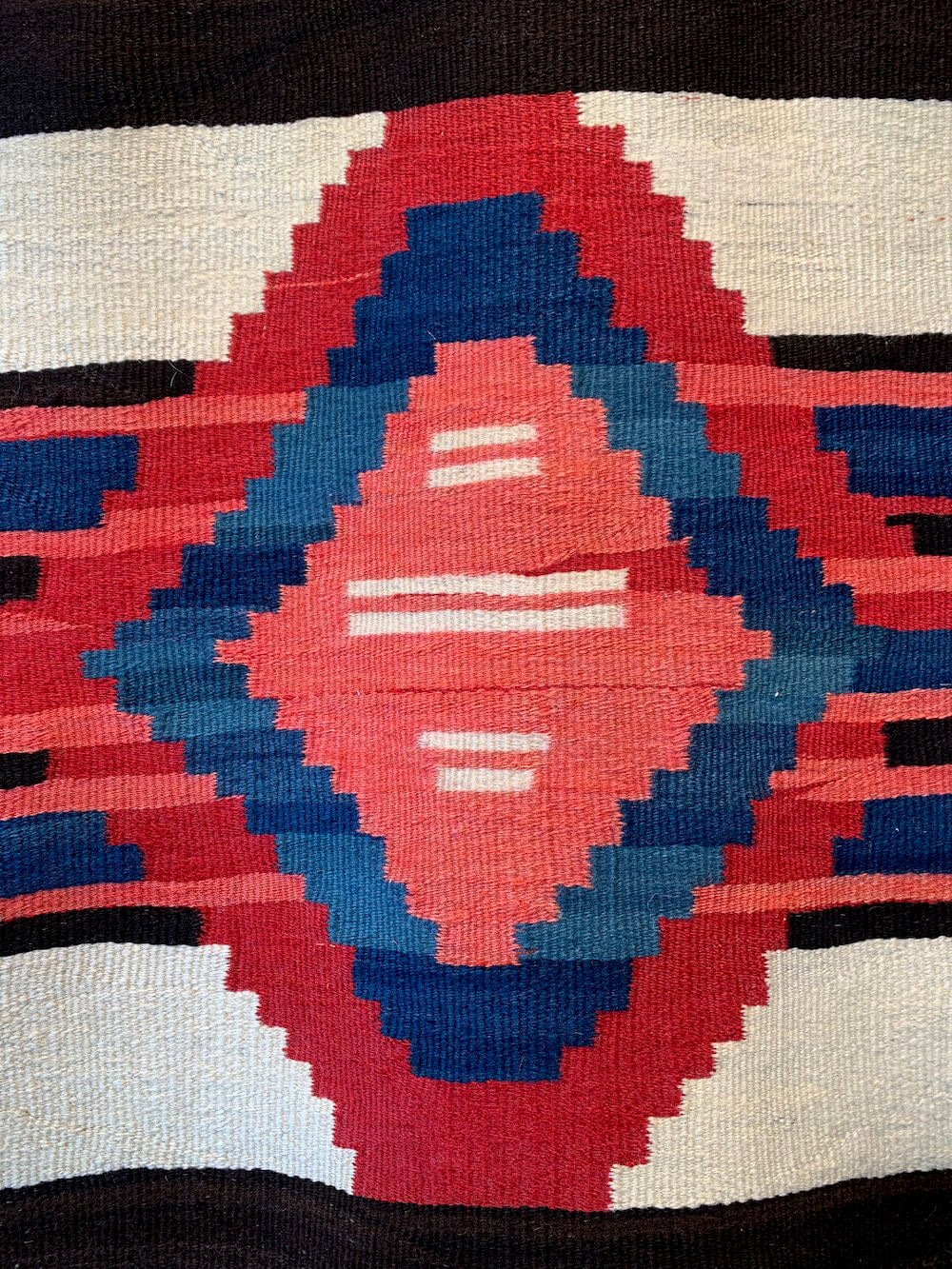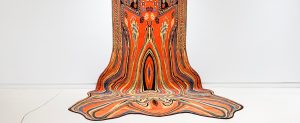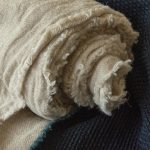Spiritlines: The Incredible History of the Navajo Weavers
Look closely at any traditional bordered garment made by the Navajo Weavers of Arizona, and it is likely that you’ll notice a small, but deliberate imperfection; a line of contrasting thread running from the inner design field into the outer layer. This line of thread is a release point from where the maker’s ch’ihónít’i, or spiritline, woven tightly into the garment through the act of making, can then be released back out to the maker, allowing them to detach from the object and thus release it into the wider public. This spiritual significance that the Navajo people attach to the process of making is just one of the reasons why their work has been such a rich source of fascination and inspiration for more than five centuries. Weavers have also incorporated mistakes into their rugs as a reminder that these are made by a human hand, which separates us from the perfections of the gods.
Legend has it the Navajo people were taught to weave by two holy figures: Spider Man and Spider Woman. Spider Man made a loom from sunshine, rain, and lightning, connecting their acts of creativity with the earth surrounding them. Meanwhile Spider Woman, with her remarkable gift for harnessing thread, taught the Navajo people how to work with thread, weaving it into luxurious patterns and garments that would become a life-sustaining source for the Navajo people – first for warmth, protection and privacy, as woven garments became blankets, dresses, saddle blankets, night covers, and soft door coverings, or hogans – later followed by an ongoing source of income as increasing demand and international trade took hold. Women were the weavers, as the leaders of a matriarchal society, while men traditionally built the looms, but in more recent times many men have taken up a weaving practice.
Anthropologists agree that the Navajo people, who had settled in the Four Corners region, were taught to weave by the neighbouring Pueblo people in around the 17th century. The Navajo people spun their own wool from the Navajo-Churro sheep, whose soft, pliable wool allowed the most tactile garments to be made. They worked with upright looms introduced to them from the Pueblo, which, in contrast with their earlier backstrap looms, allowed for the creation of much larger textiles. The designs the Navajo followed were initially influenced heavily by the Pueblo people, with banded designs made from naturalistic shades of grey, brown, blue, black and white. However, over time, the Navajo began favouring the eye-catching potential of red, which became a trademark feature of their garments, and incorporated dazzling passages of geometry and zig-zags into their designs.
While red dye was scarce in the Southwest, the Navajo secured a supply of red cloth that was brought over by the Spanish from England, where extracting red dye from the cochineal beetle was common practice; the Spanish called this striking red cloth bayeta. The Navajo developed a practice of unravelling bayeta’s yarn and weaving it carefully into their garments. Following the invention of chemical dyes in the 20th century, the Navajo were able to become increasingly adventurous with their designs, exploring a wider variety of intricate and richly complex patterns.
The early Navajo people made garments for within their own communities, or for trading with their neighbouring Native Americans. Perhaps unsurprisingly, as international travel and trade increased throughout the 20th century, Navajo’s soft, striking blankets were in high demand, providing financial security for the Navajo people. Despite being displaced from their native land by the United States government during the 19th century, the Navajo people have now returned to their native land, where they live traditionally on Navajo Reservation, located across Arizona, New Mexico and Utah. Demand is higher than ever for Navajo garments, particularly rugs, which can lend tactility and warmth to any space. With their trademark eye-catching motifs, these treasured, hand-crafted garments have so much to say about the history of Native Americans, and the life and soul that they continue to invest into everything they make.






















































One Comment
Eva Simms
I love this article. What are your rules for reposting your articles in a daily blog for poetry, politics, nature, art, and film?